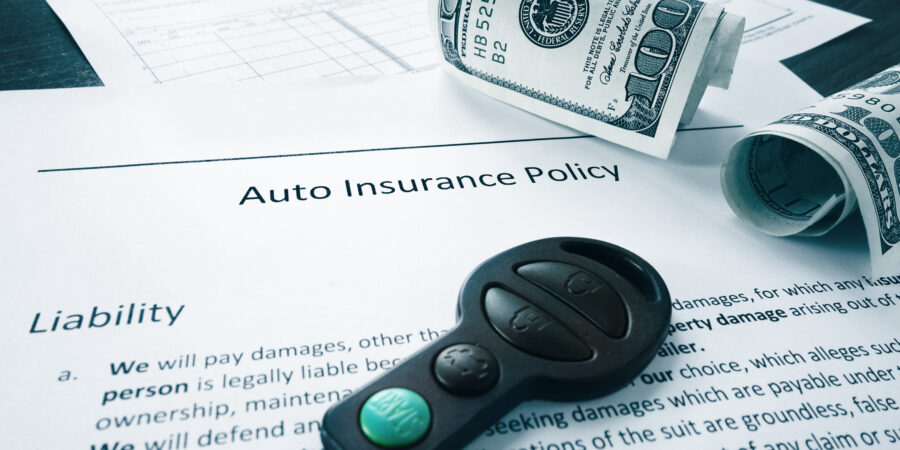Can My Settlement Exceed My Insurance Policy?
Yes, it is possible to receive a settlement that exceeds the limits of the at-fault driver’s insurance policy. In most cases, people receive more money because of a personal injury they obtained during a car collision. These injuries can be particularly catastrophic, and they include herniated discs, spinal cord injuries and traumatic brain injuries. These injuries can require medical treatment that goes on for several years, and this means that the cost to treat these injuries could be astronomical. Your personal injury claim may come to an amount that exceeds the limits of the at-fault driver’s insurance policy, but there are ways that you can increase the amount of money that you could receive.
What Are the Minimum Liability Insurance Requirements in California?
Every driver in California must be able to prove that he or she can take financial responsibility for a collision that they cause. In most cases, people choose to purchase a liability insurance policy for this purpose.
The limits for liability insurance in California include the following:
- $15,000 for injury or death to one person.
- $30,000 for injury or death to more than one person.
- $5,000 for property damage liability insurance.
Liability coverage is required so that the owner and driver of the vehicle can pay for the medical expenses and property damages of those involved in a crash that the policyholder caused. This policy only pays the expenses of third-party injuries and damages; it doesn’t pay for the medical expenses or property repair bills of the at-fault driver.
What Are the “Limits of the Policy”?
Every insurance policy has a limit. This is the amount of money that the insurance company will pay in the event that the policyholder is determined to be liable for a collision. After a collision, an insurance company will be obligated to negotiate a settlement, but the company is not required to make an offer that exceeds the limits of the policy. Insurance companies often offer compensation that is less than the limits of the policy, so they are highly unlikely to offer an amount that exceeds the limits of the policy.
How Can You Exceed the Limits of the Policy?
You may have been involved in a collision with an insured motorist, but your medical bills exceed the amount of the at-fault driver’s insurance policy. The at-fault driver may have $15,000 of bodily injury liability coverage, but your medical bills are equal to $30,000 or more. It is possible that your settlement could exceed the $15,000 limit if you take one of the following actions:
File a Claim against Your Own Underinsured Motorist Coverage.
You may have purchased underinsured motorist coverage or UIM as optional coverage in addition to your liability coverage. This type of insurance was created just for the scenario that we are discussing here today. In the event that the at-fault driver has liability insurance that doesn’t cover your medical bills in full, you may file a claim against your UIM coverage. You will be able to recover compensation for the damage to your vehicle and for payment of your medical bills with UIM coverage.
If you failed to purchase UIM coverage, all hope is not lost. You can obtain the extra amount of money that you need by doing one of the following:
Sue the Insurance Company for Acting in Bad Faith.
You may need to hire a personal injury attorney if you believe that your insurance company is acting in bad faith. “Bad faith” means that the company fails to act on its promises that it made to you after you file a personal injury claim.
An example of an insurance company acting in bad faith is when the agent delays payment on a personal injury claim that is definitely valid. They do this so that they can slow down the process of settling your claim. They know that you are in a difficult situation and that you would like to receive your money as quickly as possible. By slowing down the process, they hope that you will accept a low offer or give up and go away.
Your insurance company may be placing its financial interests ahead of yours, and if this is the case, you will be entitled to file a lawsuit so that you can receive what you rightfully deserve. When your case goes to court, the jury may award you an amount that exceeds the limits of your policy, and the insurance company will be forced to pay it.
Sue the Driver or the Owner of the Vehicle.
In the event that the policy limits of the at-fault driver do not cover your medical and property repair bills, you have the option of suing the motorist. If the at-fault driver does not own the vehicle, you may sue the owner of the vehicle. This option is only going to be possible if the at-fault driver or the owner of the vehicle have enough assets to cover the remainder of your bills. That is because it can be extremely difficult to collect a judgment from someone with insufficient assets.
Sue the Other People Involved.
Other parties may have been involved in your collision, so more than one person may be liable for the crash. For example, if one of the vehicles in your collision failed because the parts were faulty, the parts manufacturer may be held liable for the collision. Your crash may have been the result of the at-fault driver swerving to avoid a pothole in the street. In this case, you will be able to sue the local municipality that had the responsibility of keeping the roads safe for motorists.
Obtaining a Settlement that Exceeds the Limits of the Policy:
Seize the At-Fault Driver’s Property.
If you win your case in court and the at-fault party is ordered to pay a settlement that exceeds the limits of his or her policy, the at-fault driver will have a court judgment against him or her. Then, you will be able to obtain an order from the court that instructs the sheriff to collect the at-fault driver’s property so that the at-fault driver can pay the portion that his or her liability insurance does not cover.
Obtain a Judgment Lien.
After the court decides in your favor, the at-fault driver will have a court judgment against him or her. The next step that you will need to take is obtaining and recording a judgment lien against the at-fault driver’s property. This may include any property that the at-fault driver acquires after the collision and judgment. By filing a judgment lien, you will prevent the at-fault driver from selling this property.
The Inability to Sue the At-Fault Driver.
As was mentioned above, you may not be able to sue the at-fault driver because he or she doesn’t have sufficient assets to cover the remainder of your bills that the liability insurance policy leaves for you to pay. In this case, the at-fault driver may even declare bankruptcy. You may have several expenses that you will need to pay, but you will not be able to receive money for pain and suffering or other damages.
In this case, the at-fault driver is responsible for paying your bills, but because it may be impossible for you to collect from that person, you will only be able to accept what the at-fault driver’s liability coverage will pay.
How Do You Ensure that You Receive the Maximum Compensation Possible?
In order to ensure that you receive the maximum compensation possible, you must hire a personal injury attorney. Before you hire this attorney, make sure that he or she has a history of obtaining the maximum amount in compensation for their clients. It is also very important that your lawyer has experience defending clients against insurance companies that have acted in bad faith.
In addition to liability insurance, the at-fault driver may also have umbrella insurance. Umbrella insurance is an optional policy that provides additional coverage for a policyholder’s auto or home insurance policies. An umbrella insurance policy will cover the injuries and property damages that occur during a car collision. Your attorney will have the duty of determining that the at-fault driver in your collision has this type of coverage. If so, it can ensure that you receive the maximum amount of money that you are entitled to receive.
An Example of Umbrella Insurance.
Many people purchase more than the limits listed above for their auto liability insurance coverage. For example, the at-fault driver that hit you may have $300,000 in bodily injury liability coverage, but your medical bills came to $500,000. The at-fault driver’s auto insurance policy is only obligated to cover $300,000, so you will have $200,000 left over to pay. If your personal injury attorney discovers that the at-fault driver has an umbrella insurance policy worth $500,000, he or she will go after that policy for payment of the remainder of your bills.
If you have been injured in a car collision caused by a negligent driver, you need to hire a personal injury law firm. JT LegalGroup has the experience you need, and we will offer you a free case evaluation.



